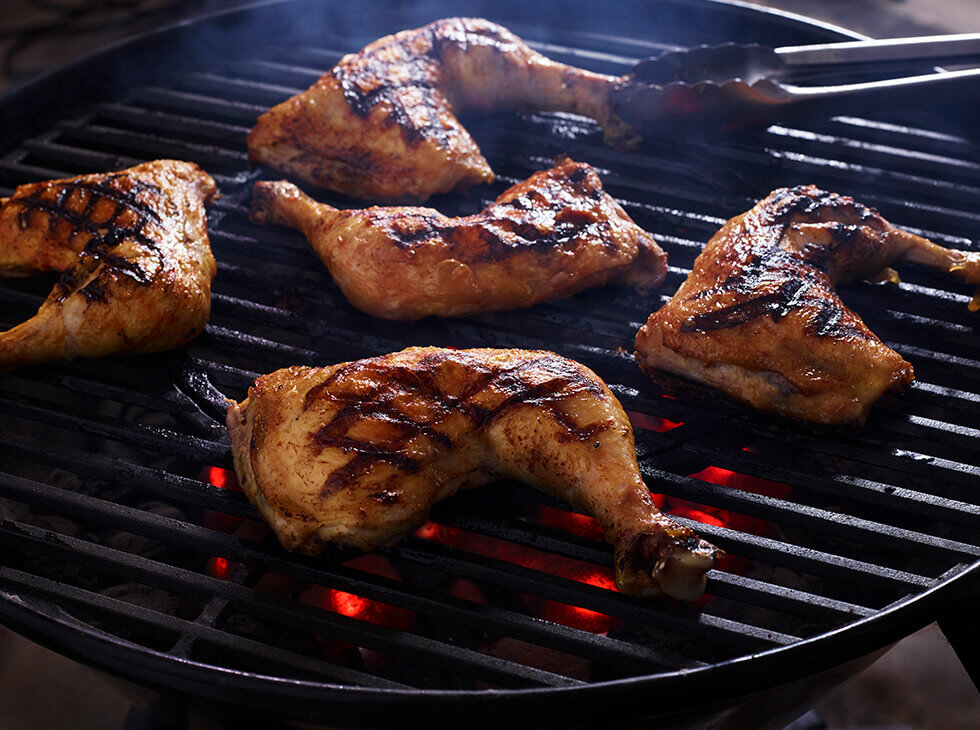
Grilling
Besides allowing you to enjoy a nice day, grilling adds smoky flavor and crispy char to your chicken. Some advice for your next grill-out:
- Bone-in, skin-on chicken is best to use on the grill. The skin helps retain moisture, while the bone adds flavor.
- Brining or marinating your chicken before grilling helps it retain moisture and taste great.
- Use a well-maintained grill brush to clean off grates, and make sure no loose bristles are left on the grates. Keep your grates well-oiled to prevent sticking.
- Cook chicken indirectly by using a two-zone fire, a fire where one side of the grill is hotter than the other. Medium heat is best for chicken. Internal temperature of chicken should be 180º F (82º C) when it’s done.
- Cover your grill to save precious heat and ensure even cooking.
- Baste your chicken toward the end of cook time, as many sauces contain sugars that burn easily.
- Scrape the grill when done to get it ready for next time!
Real Tip: To keep chicken breasts moist on the grill, place a foilwrapped brick on top of them. The pressure helps them cook faster, and the brick prevents moisture from escaping from the chicken.
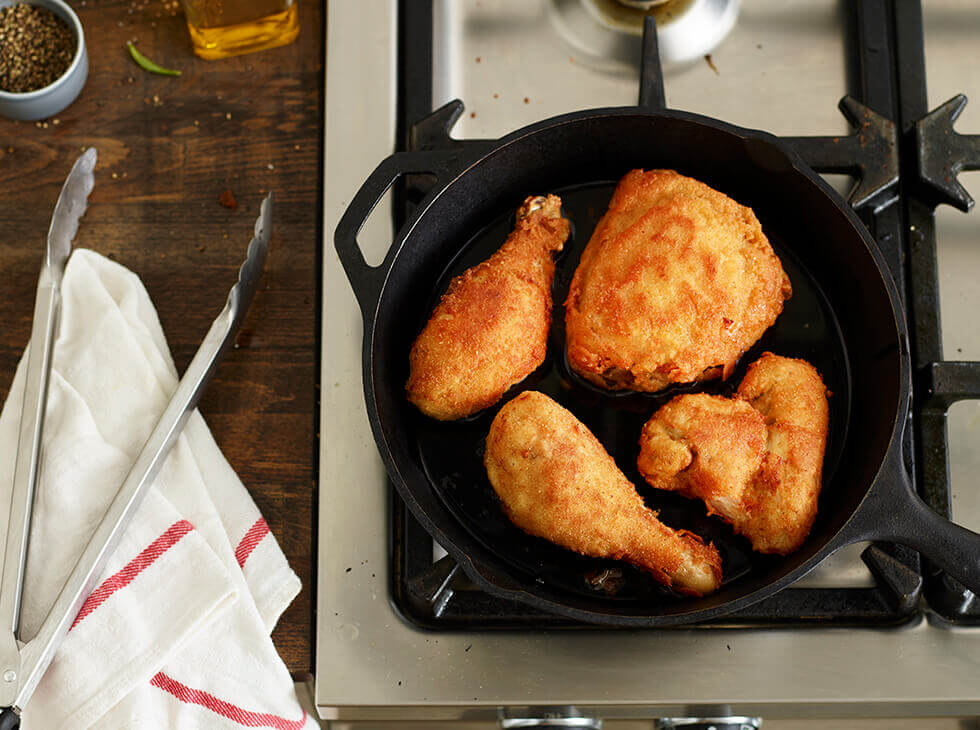
Skillet Frying
Frying in a pan or skillet is a quick, easy way to get crispy, homemade fried chicken.
- Heat about ¼-inch worth of oil in your pan until it hits 325º F (163º C).
- Gently place battered or breaded chicken into the pan to avoid splattering the oil. It will not be completely submerged.
- Nudging the chicken a few times before you turn it keeps it from sticking to the pan.
- Turn it over only once after about 6 or 7 minutes, when you can see the chicken start to brown on the sides. Internal temperature of chicken should be 180º F (82º C) when it’s done.
- Set on paper towel to drain before serving.
Real Tip: A well-seasoned cast iron skillet adds a ton of flavor and heats evenly and quickly.
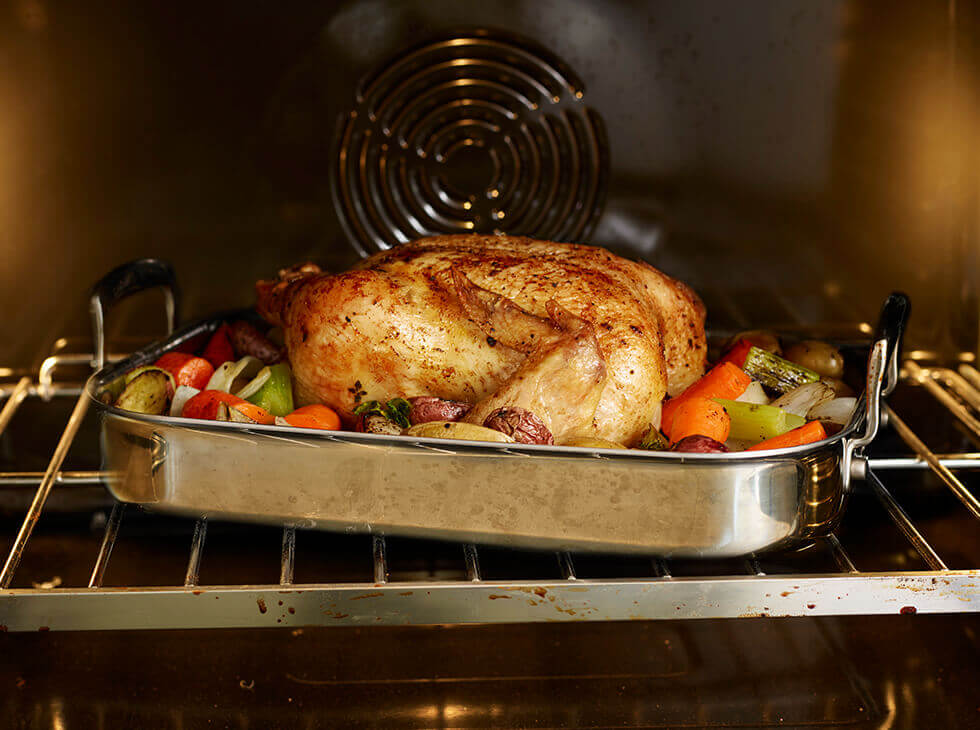
Oven Roasting
Roasting a whole bird may seem daunting, but it’s a surprisingly hands-off affair. It’s also a fun way to give family and friends a sense of community along with a delicious meal. Keep these things in mind when roasting:
Let it marinate: Marinating your bird will help to make sure it’s tender, juicy and full of flavor. This is by no means the only way to prepare your chicken, however.
The roast: Preheat the oven to 350º F (232º C). Pop it in and cook according to instructions on chicken packaging, usually about 20 minutes per pound. Keep yourself busy and avoid temptation! Opening and closing the oven door will only let heat escape and keep your chicken from roasting. It’s done when the chicken is 180º F (82º C).
Carving: Using fresh utensils, remove the legs and wings at the joints. Remove the drumstick from the thigh. Then slice along the breast bone, and then crosswise, cutting the breast into pieces.
Real Tip: A bed of potatoes and veggies raises the chicken, letting it roast more evenly and giving you a readymade side dish for the feast.
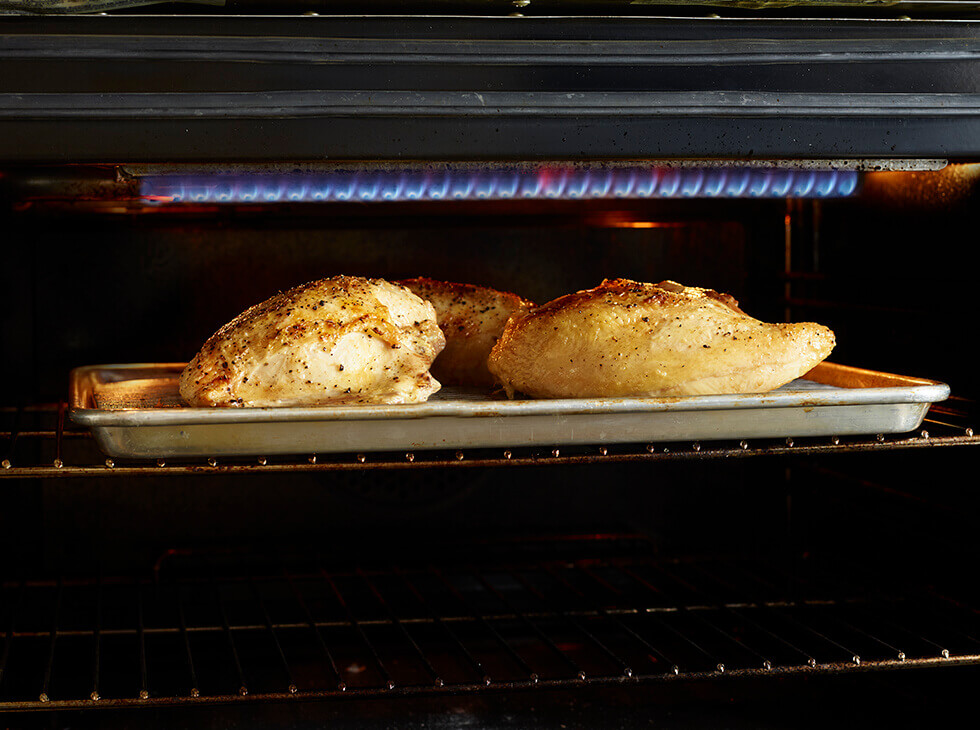
Broiling
Every oven has a broiler. They are found either on the very top or bottom of the oven. Like a grill, it cooks hot and fast. It’s great for browning or quickly searing food. Gas ovens have open flame broilers, while electric ovens usually have a red-hot coil.
Preheat the broiler to give your meat a blast of heat when it goes in. Place the chicken on the rack closest to the broiler. Broilers usually only have two settings — on and off. Open the door of the oven slightly to keep the cooking area from getting too hot. Internal temperature of chicken should be 180º F (82º C) when it’s done.
Caution: Using the broiler generates a lot of heat. You should be able to watch the oven closely while broiling.
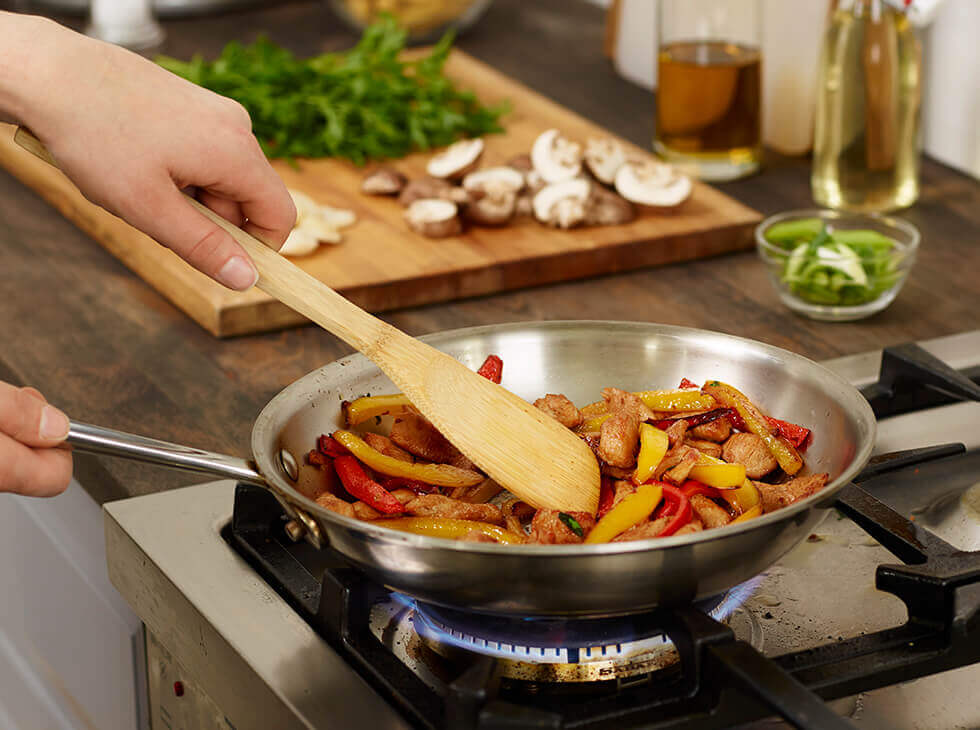
Sautéing
Sautéing is similar to skillet frying, but there are three major differences: the pan is hotter, the food size is smaller, and the food is kept in near-constant motion.
“Sauté” actually means “to jump” in French, but you don’t need to toss the ingredients into the air. Just moving them around with a heat-proof or wooden spatula works. Internal temperature of chicken should be 180º F (82º C) when it’s done.
After you’re done, it’s easy to create a sauce by deglazing the pan. To deglaze, add water, wine or broth and scrape up the little brown bits at the bottom of the pan. Add seasoning and reduce by letting simmer until it thickens.
Real Tip: To make sure your pan is hot enough to sauté, sprinkle a few drops of water into it. If the water immediately sizzles and evaporates, you’re good to go!
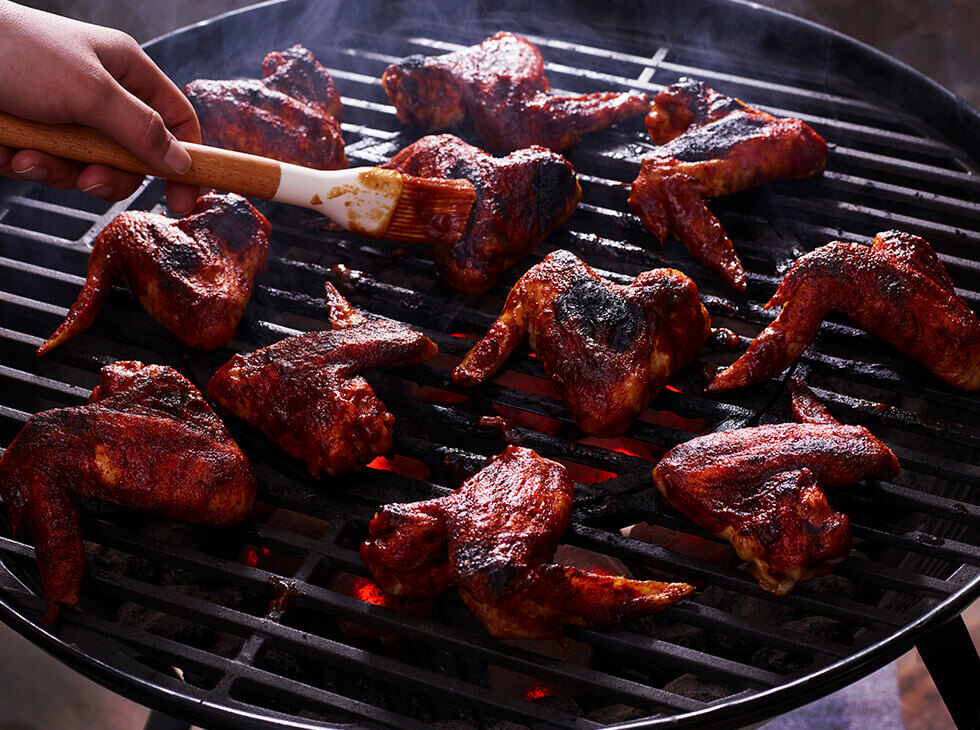
Basting
On the grill: We recommend silicone brushes, as they are easy to clean and won’t leave fibers behind on your food. You should really only baste towards the end of cooking time — it ensures that the chicken is cooked and safe for the brush to touch, and keeps the sugars in the basting liquid from burning and creating off flavors.
In the oven: A pretty simple affair. Using a baster or a spoon, take broth from the bottom of the roasting pan and pour over the top of the bird.
Reminder: Internal temperature of chicken should be 180º F (82º C) when it’s done. Always use different utensils for cooked and raw chicken. Do not reuse marinade.